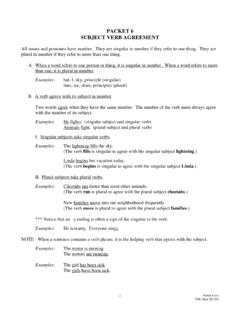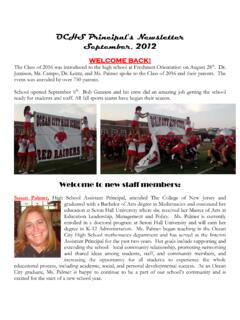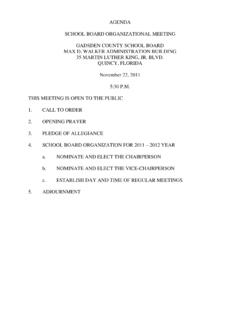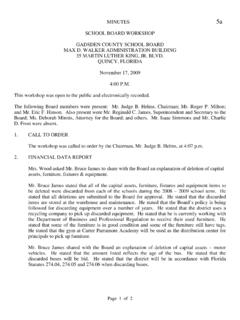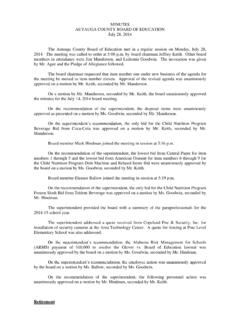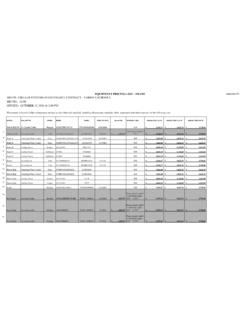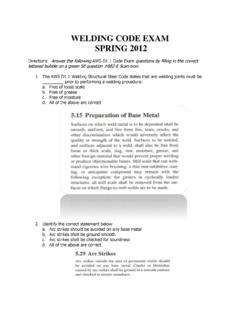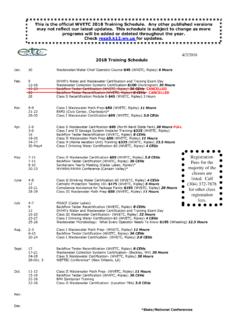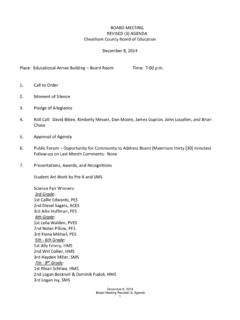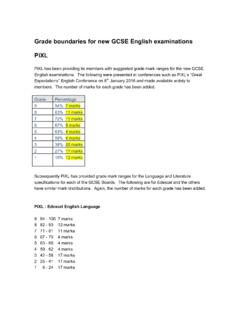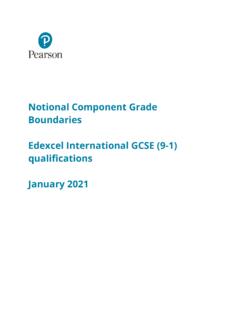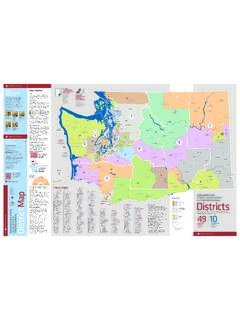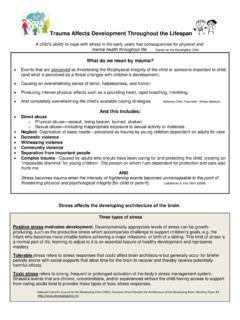Transcription of Ocean-Continent Convergent Plate Boundaries
1 Ocean-Continent ConvergentPlate BoundariesDana Desonie, Thanks to the AuthorsClick (No sign in required)To access a customizable version of this book, as well as otherinteractive content, visit Foundation is a non-profit organization with a mission toreduce the cost of textbook materials for the K-12 market bothin the and worldwide. Using an open-content, web-basedcollaborative model termed theFlexBook , CK-12 intends topioneer the generation and distribution of high-quality educationalcontent that will serve both as core text as well as provide anadaptive environment for learning, powered through theFlexBookPlatform .Copyright 2015 CK-12 Foundation, names CK-12 and CK12 and associated logos and theterms FlexBook and FlexBook Platform (collectively CK-12 Marks ) are trademarks and service marks of CK-12 Foundation and are protected by federal, state, and form of reproduction of this book in any format or medium,in whole or in sections must include the referral attribution (placed in a visible location) inaddition to the following as otherwise noted, all CK-12 Content (including CK-12 Curriculum Material) is made available to Users in accordancewith the Creative Commons Attribution-Non-Commercial (CC BY-NC ) License ( ), as amended and updated by Creative Com-mons from time to time (the CC License )
2 , which is incorporatedherein by this terms can be found at : January 6, 2015 AUTHORDana Desonie, 1. Ocean-Continent Convergent Plate BoundariesCHAPTER1 Ocean-ContinentConvergent Plate Boundaries Describe the activity and features of Convergent Plate Boundaries where an oceanic Plate meets a do you see at an Ocean-Continent Convergent boundary?We continue our field trip up the West Coast. Just offshore from Washington, Oregon, and Northern California is asubduction zone, where the Juan de Fuca Plate is sinking into the mantle. The Juan de Fuca Plate is being created ata spreading center, the Juan de Fuca Ridge. Let s see the results of subduction of the Juan de Fuca Plate BoundariesWhen two plates converge, what happens depends on the types of lithosphere that meet.
3 The three possibilities areoceanic crust to oceanic crust, oceanic crust to continental crust, or continental crust to continental crust. If at leastone of the slabs of lithosphere is oceanic, that oceanic Plate will plunge into the trench and back into the mantle. Themeeting of two enormous slabs of lithosphere and subduction of one results in magma generation and both plates meet with continental crust, there will be mountain building. Each of the three possibilities is discussedin a different this concept we look at subduction of an oceanic Plate beneath a continental Plate in the Pacific ConvergenceWhen oceanic crust converges with continental crust, the denser oceanic Plate plunges beneath the continental process, calledsubduction, occurs at the oceanic trenches.
4 The entire region is known as asubduction zones have a lot of intense earthquakes and volcanic eruptions. The subducting Plate causes melting inthe mantle above the Plate . The magma rises and erupts, creating volcanoes. These coastal volcanic mountains arefound in a line above the subducting Plate ( ). The volcanoes are known as acontinental of an oceanic Plate beneath a continental Plate causes earthquakes and forms a line of volcanoesknown as a continental movement of crust and magma causes earthquakes. A map of earthquake epicenters at subduction zones isfound here: .This animation shows the relationship between subduction of the lithosphere and creation of a volcanic arc: 1. Ocean-Continent Convergent Plate .Remember that the mid-ocean ridge is where hot mantle material upwells in a convection cell.
5 The upwelling mantlemelts due to pressure release to form lava. Lava flows at the surface cool rapidly to become basalt, but deeper in thecrust, magma cools more slowly to form gabbro. The entire ridge system is made up of igneous rock that is eitherextrusive or intrusive. The seafloor is also igneous rock with some sediment that has fallen onto VolcanoesThe volcanoes of northeastern California Lassen Peak, Mount Shasta, and Medicine Lake volcano along withthe rest of the Cascade Mountains of the Pacific Northwest, are the result of subduction of the Juan de Fuca platebeneath the North American Plate ( ). The Juan de Fuca Plate is created by seafloor spreading just offshoreat the Juan de Fuca Cascade Mountains of the PacificNorthwest are a continental at a Convergent BoundaryIf the magma at a continental arc is felsic, it may be too viscous (thick) to rise through the crust.
6 The magma willcool slowly to form granite or granodiorite. These large bodies of intrusive igneous rocks are calledbatholiths, may someday be uplifted to form a mountain range. California has an ancient set of batholiths that make upthe Sierra Nevada mountains ( ).FIGURE Sierra Nevada batholith cooled beneath a volcanic arc roughly 200 million years ago. The rock is well exposedhere at Mount Whitney. Similar batholiths are likely forming beneath the Andes and Cascades animation of an ocean continent Plate boundary is seen here: .Summary When two plates come towards each other they create a Convergent Plate boundary. The plates can meet where both have oceanic crust or both have continental crust, or they can meet where onehas oceanic and one has continental.
7 Dense oceanic crust will subduct beneath continental crust or a less dense slab of oceanic crust. The oceanic Plate subducts into a trench, resulting in earthquakes. Melting of mantle material creates volca-noes at the subduction zone. If the magma is too viscous to rise to the surface it will become stuck in the crust to create intrusive 1. Ocean-Continent Convergent Plate BoundariesMEDIAC lick image to the left or use the URL : MoreUse these resources to answer the questions that -geological-features-of- Convergent - Plate -boundaries1. At what type of Plate boundary to plates run into each other?2. When one of the plates is oceanic, what happens?3. What two things cause the mountain ranges that are the volcanic arc?4. What is happening at a deep trench?
8 5. What happens when two continental plates run together?6. What made Mt. Everest so high?Review1. What is the direction of Plate motion at a Convergent Plate boundary?2. Describe the relationship between the convection cell and subduction at a Subduction is sometimes called crustal recycling. Why do you think this is the case?4. What happens if magma is too viscous to rise through the crust to erupt at the surface?References1. User:Booyabazooka/Wikipedia. Subduction of an oceanic Plate beneath a continental Plate causes earthquakes and forms a line of volcanoes known as a continental arc . Public Domain2. Courtesy of US Geological Survey. The Cascade Mountains of the Pacific Northwest are a continentalarc .Public Domain3. User:Geographer/Wikipedia.
9 Picture of Mount Whitney, which formed from the Sierra Nevada batholith cooling beneath a volcanic arc . CC BY
